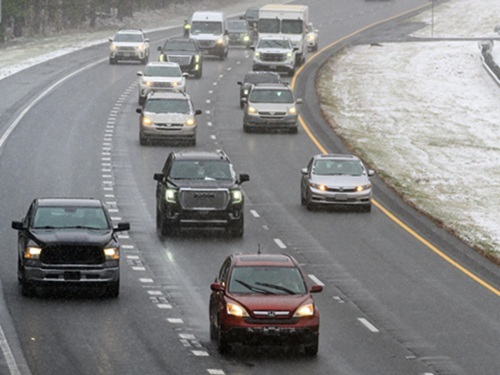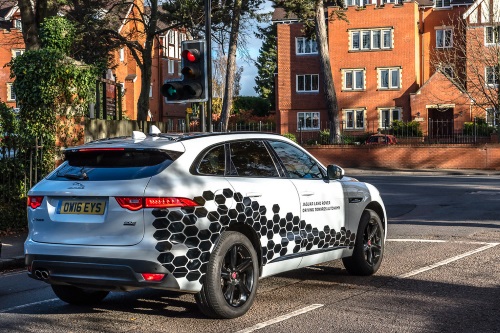According to new analysis released by consulting firm ABI Research on March 10, the introduction of 5G cellular connectivity in the transportation sector is expected to create a “transformative effect” on roadways worldwide within the next 15 years.
[Above photo by Jaguar Land Rover.]
The firm projects that by 2023, vehicles will start to communicate with each other via cellular connections to increase overall road safety and traffic, with a total of 41 million 5G connected cars expected to be in operation by 2030. That number will rise to 83 million 5G connected cars by 2035, ABI added.
“These numbers underline the huge momentum for cellular connectivity, and particularly 5G, in the automotive sector,” said Leo Gergs, ABI’s research analyst for 5G markets, in a statement.

“As a consequence, we will see a rising number of automotive OEMs start developing C-V2X [cellular-based vehicle-to-everything] communication modules for their cars during 2020,” he added. “We can then expect the first 5G connected cars on the roads in 2022.”
More importantly, Gergs said such sharing of sensor data will make “overtaking” vehicles at speed “much safer” and will be critical to protecting vulnerable road users – such as pedestrians and bicyclists.
“Therefore, bringing 5G-based cellular connectivity into cars will be critical in making the vision of zero road traffic deaths a reality,” he emphasized.
In total, ABI Research has quantified the contribution of 5G to global gross domestic product to reach $17 trillion by 2035, with a large part of that coming from increasing the safety of road traffic, which will reduce health care expenditure drastically and take pressure off doctors and hospitals.
“To unlock all these benefits, public authorities and transportation infrastructure owners need to realize their responsibility to fund the installation of cellular networks and enable the widespread deployment of C-V2X to make road traffic safer and greener,” Gergs noted.
 Nation
Nation
Registration Open for AASHTO’s Winter Rail Meeting
December 19, 2025 Nation
Nation

